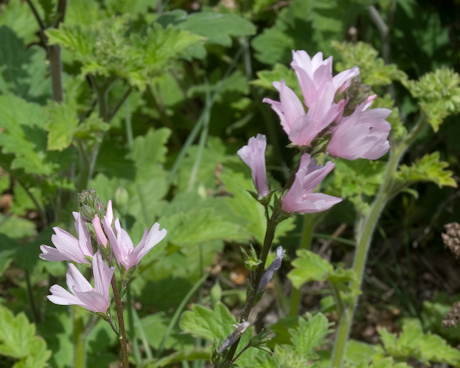Lupinus latifolius
Family: Leguminosae
Common names: LUPIN, LUPINE
Native to: California, Western North America
Sentiment: imagination
Plant
Type: perennial
Forms: clumping, erect
Max height: 4 feet
Max width: 3.3 feet
Flower
magenta/purple, secondary color present, violet
Leaf
green
Horticulture
Attracts wildlife: adult butterfly, bird, specific butterfly species
Plant part consumed by birds: seeds
Exposure: part shade, sun
Landscape uses: container, cut flower
Propagates by: seed
flowers in spring
flowers in summer
Soil acidity: slightly acidic
Soil types: well drained, wide range
USDA Zones: zone 3 -40 f, zone 4 -30 f, zone 5 to -20 f, zone 6 to -10 f, zone 7 to 0 f, zone 8 to +10 f, zone 9 to +20 f
Temp. range: -40 to +30 °F
Water: moist, regular
Of the 724 Lupinus species, seven perennials are cultivated that grow in Zones 3-10. They are members of the Leguminosae family. LUPINE range in height from 1½ to 5 feet tall, prefers regular water, grows from seed, and will thrive in either sun or part shade. Lupinus microcarpus is drought tolerant. Most also attract hummingbirds to feed on nectar and seeds.
LUPINES attract Battus philenor, PIPEVINE SWALLOWTAIL and
Erynnis icelus, DREAMY DUSKYWING.
This plant can be grown in a container and will attract and feed adult butterflies. These plant can be found in every height range – from tiny to large – from less than a foot high to over 10 feet tall.
Our database of nectar plants for all US butterflies contains over 10,000 entries. The top five nectar plants -- Cirsium, Lantana, Asclepias, Salvia, and Verbena -- will appeal to 90% of all US butterflies. Pick from these if you want to provide nectar for your local butterflies.
Once you start with these, you can add from another 630 genera in 110 plant families to attract more insects to your garden.
By far the most import butterfly nectar plant family is Asteraceae. If you grow plants in from this family, butterflies will find your garden.









